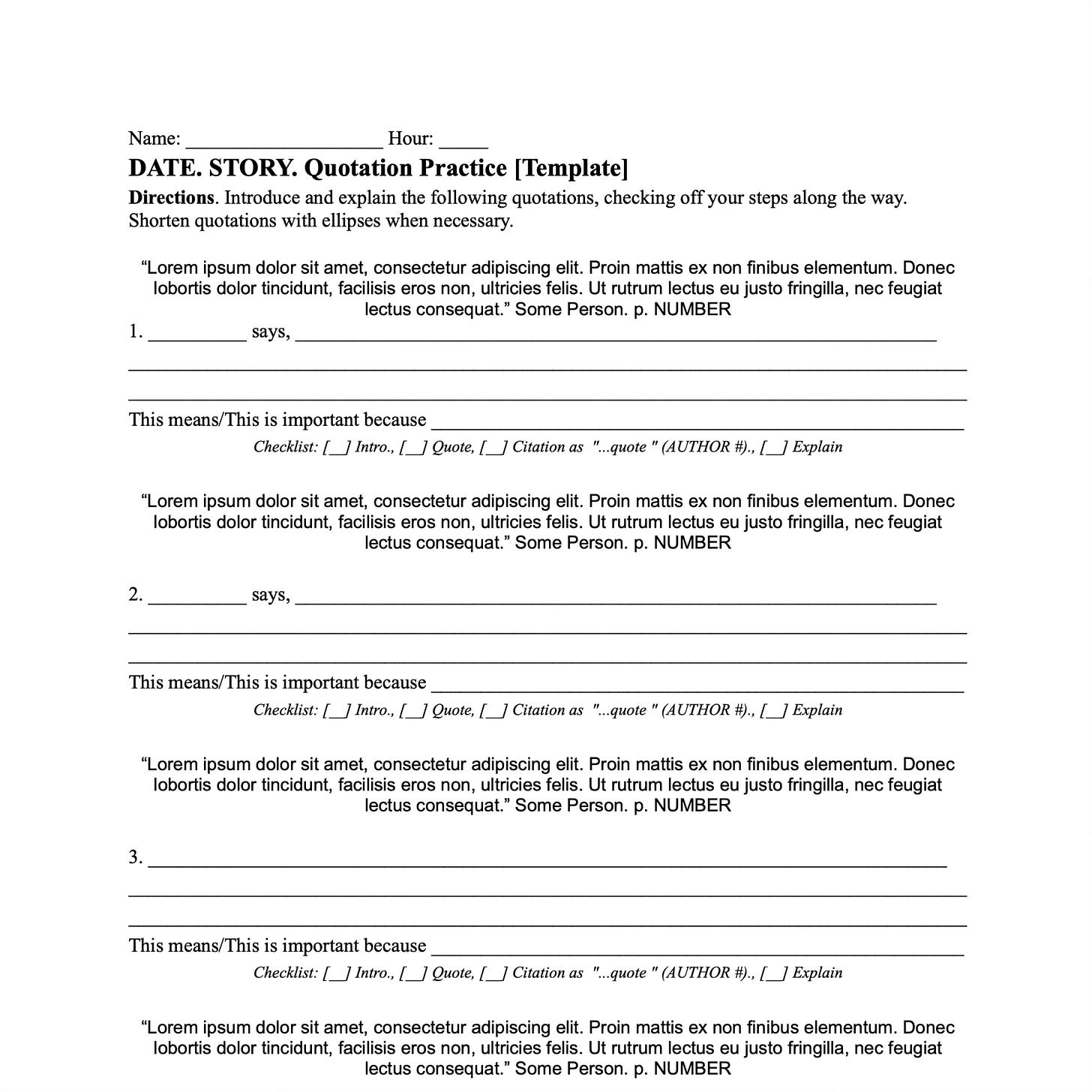📷 The Big Picture. Integrating quotations poses a challenge for many students. Beyond selecting the quotation, the skill itself requires many steps: providing context, trimming quotation, and explaining relevance. Without support, especially in middle school, requiring quotations means resorting to random quotations like pin the tail on the donkey.
To reduce cognitive load and increase retention, consider reviewing the major steps using templates, checklists, and pre-selected quotations. Checklists make thinking visible and increase independence.
Checklist: [__] Intro., [__] Quote, [__] Citation as "...quote " (AUTHOR #)., [__] Explain
⚙️ How It Works. Before starting, we review the parts of a quotation: (a) the introduction, (b) the quotation, (c) the in-text citation, and (d) the explanation. We then analyze an example before moving to a practice set.
As students write, the checklist tracks the steps. Here’s an example progression:
1. Model. I narrate the steps on the smart panel and the students follow.
2. Students Lead. Still writing as a class, the students narrate the steps.
3. Individual Practice. Students continue the sheet on their own.
4. Peer Review. Students trade papers and check for the major steps.
5. Class Discussion. We discuss where examples strayed.
💡 Tip! Begin with sentence starters and then transition to blank lines. This helps gradually offload steps and increase independence.
⏰ Purposes. When should you review quotations? Many occasions stand out:
1. As Preview. Preview topic-related quotations ahead of a reading.
2. As Review. Use quotations as periodic review and discussions.
3. As Evidence. Practice quotations then integrate them into something else.
🤔 Yes, but. “Shouldn’t students learn to do this on their own? Why give them the steps if they just forget them later? And why select the quotations for them? How does that help?”
➡️ Why It Works. Checklists make thinking visible and free mental energy wherever students struggle. Many struggle with composition (basic mechanics) while many more struggle with comprehension (which quotation). When spaced out, this paper helps many middle school students use quotations with more confidence.
As for quotation selection, there’s no vice to narrowing first. This eliminates the required quotations becoming random quotations. Discuss important quotation as an overall discussion activity while reading.
If you move from quotation sheets to longer writing, knowing where to place evidence becomes another skill entirely. Rather than rely on terrible paragraph acronyms, let them make teachable mistakes.
🌎 Zoom Out. As I’ve describe elsewhere, I love blending quotations into dialogue in general. Besides teaching speech as vocabulary (dialogue, monologue, soliloquy, aside), I teach speech across mediums. My favorite progression goes as follows:
1. Dictation. Students transcribe speech from a video clip to script or play form.
2. Revision. Rewrite the script into prose, adding quotation marks and “he said, she said.”
3. Introducing Quotations. Introducing integrating speech into writing.
4. As Evidence. Introduce speech-as-evidence.
🆓 Templates. Want to try it? Feel free to steal my template and adapt as necessary! Just be sure to keep the checklists smaller and center aligned to save space.
💬 Feedback. What questions do you have? Would you like to see any other materials? Feel free to let me know in the comments section!
🎁 New to the blog? Check out my recent starter pack as well as a Google Drive Folder with FREE classroom resources! Also, The Honest School Times has your schooling satire.
⏰ Recent Posts
🏆 Fan Favorites
✏️ Teach Writing Tomorrow
📓 Other Writing Tricks





